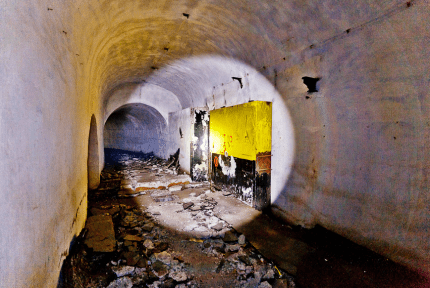In the occupied Crimea, the Russians carried out a partial restoration of the Feodosia-13 facility, a Soviet nuclear weapons depot. However, the specified object is currently used as a warehouse for the storage of conventional ammunition of the Russian army.
Points of attention
- Ukrainian intelligence claims that there are no facilities for the placement of nuclear weapons on the occupied peninsula, and no cases of their transportation have been recorded.
- The Russian military has a large arsenal of tactical nuclear weapons, which can be placed on various types of vehicles and military units of the Russian Federation.
- The Main Directorate of Intelligence of the Ministry of Defense carried out strikes on military facilities of the Russian army in the occupied territories of Debaltseve and Novoluhansky.
The Soviet nuclear weapons warehouse in Crimea is used as a warehouse for the storage of Russian munition
The Defence Intelligence of Ukraine (DIU) commented on the presence of nuclear weapons on the occupied peninsula.
The DIU noted that there are no facilities in the occupied Crimea where the occupiers place nuclear weapons. In addition, no cases of transportation of the mentioned weapons were recorded.
In January 2023, Andriy Chernyak, a DIU representative, reported that the occupiers of Crimea had been working in previous years to restore the stockpile of nuclear weapons on the territory of the peninsula.
According to Ukrainian intelligence data, a partial restoration of the "Feodosia-13" facility has been carried out. However, the specified object is a warehouse for storing conventional ammunition.

The GUR noted that aircraft, helicopters, as well as submarines, ships, and boats located in Crimea, could be carriers of tactical nuclear weapons.
In particular, the occupying missile forces and the artillery of the ground forces in Crimea, they have operational-tactical missiles of missile brigades (OTRK "Iskander"), as well as special artillery shots (nuclear artillery shells and mortar mines) and artillery units, which are armed with 152-mm and 203-mm artillery systems and 240-mm mortars
The Russian Aerospace Forces have nuclear munitions of the Air Force (warheads of air-based cruise missiles, aerial bombs and aerial sea mines), which can be carried by attack and bomber aircraft of operational-tactical aviation (Su-25СМ3. Su-24М. Cy -34. MiG -31K).
In addition, Ukrainian intelligence officers added that there might be separate air defence units equipped with S-300 PM systems, defined by relevant orders. In particular, the Russian Navy has:
nuclear munitions of the Navy are not the main parts and combat units of sea-based missiles and coastal missile complexes;
combat units of anti-ship and anti-submarine missiles;
combat charging compartments and combat parts of torpedoes;
anchor and bottom mines;
coastal artillery shells;
depth charges and "dive" aerial bombs.
At the same time, the DIU did not record additional movements of missile carriers of nuclear weapons to the occupied peninsula for the use of tactical nuclear weapons.
DIU struck the occupied Debaltseve and Novoluhanske
DIU fighters struck military facilities of the criminal army of the Russian Federation in the occupied Debaltseve and Novoluhanske regions of the Donetsk region.
It is noted that the strikes were inflicted on July 6.
On July 6, scouts of the DIU Department of Active Actions, in cooperation with the aerial reconnaissance unit of the 45th separate artillery brigade, discovered and inflicted fire damage on two military facilities of the aggressor state of Russia in the temporarily occupied territory of the Donetsk region, the DIU emphasises.
in Debaltseve, scouts hit the logistics centre. The invaders stored tank equipment and ammunition there;
in Novoluhanske, DIU burned down the expensive Russian automated obstacle-setting station R-330Zh "Zhitel".




